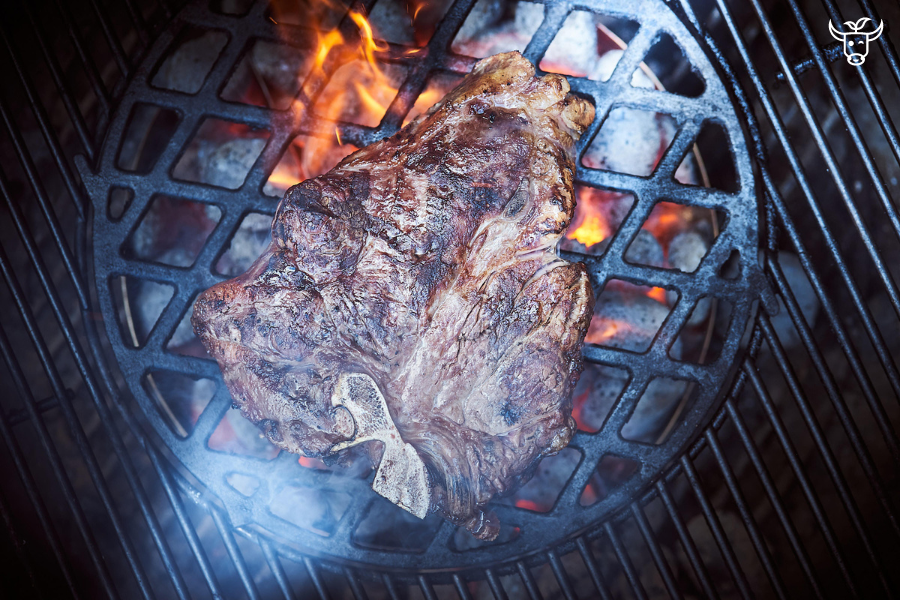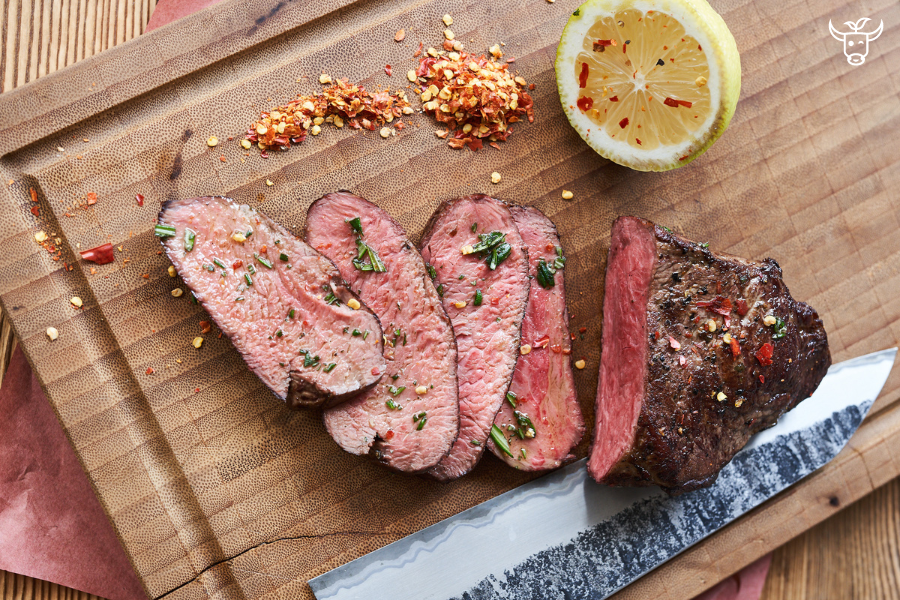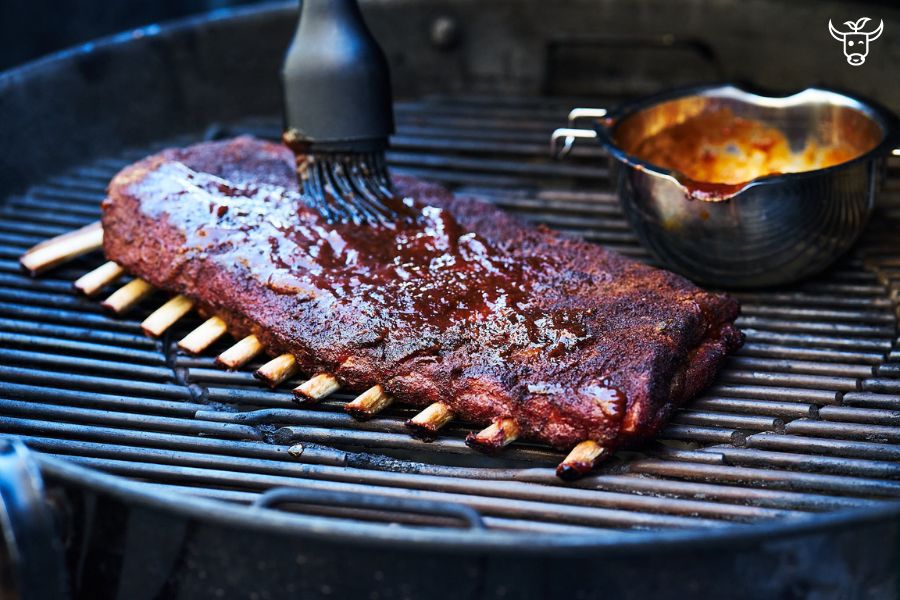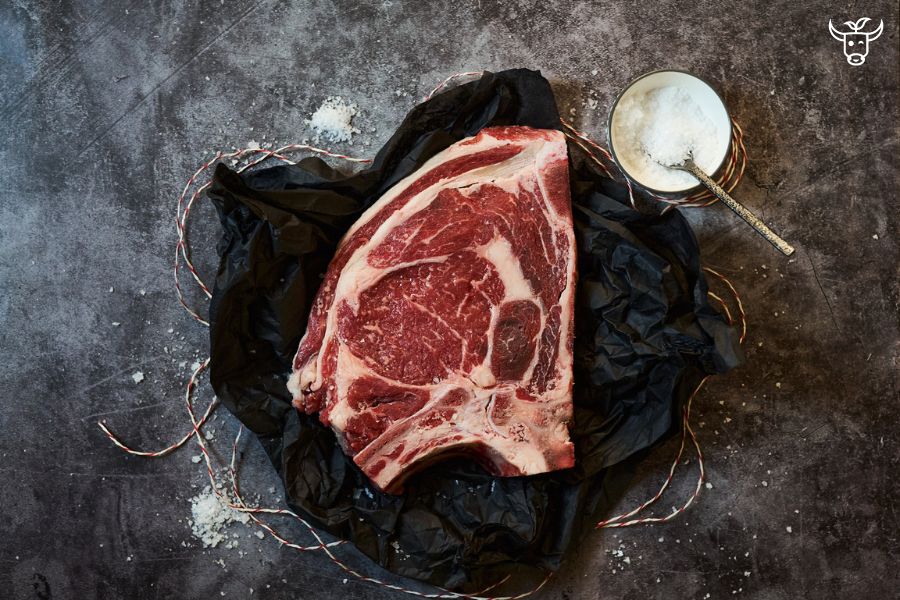


Themen
Meistgelesene Artikel
Juicy, tender and a crust with fine roasted aromas - that's exactly how a steak has to be. In addition to high meat quality, the so-called Maillard reaction is responsible for the fabulous taste of a steak. What exactly happens during this chemical reaction and how you can make the most of the Maillard effect is revealed in our online article.
On the grill, in the pan or in the smoker - no matter how you prepare a steak, there's one thing we're all keen on: that's right, the perfect fine roast aromas. However, it doesn't really matter where they are prepared, the main thing is that they are hot - really hot!
The most important prerequisite for optimal roast flavours is therefore an enormously strong, albeit short, heating of the meat. This is because the heat should only produce the desired roasting substances, not penetrate the meat.In order to achieve the ideal degree of cooking, the steak is gently cooked until done.
You can find the best tips for the optimal degree of cooking here.
Chemistry lessons in the kitchen. Short and quick heat sounds relatively simple at first. However, the process of the Maillard reaction is anything but. In fact, a multitude of complex chemical processes take place in the background.When steaks or other foods containing carbohydrates and protein are heated, a compound of certain amino acids and sugar molecules is formed, while the water is reduced in the process.
This chemical process occurs at a heat of 110 to 150 °C. One molecule each of sugar and amino acid come together, while a water molecule is split off. In technical jargon, this is referred to as melanoidins, or, to put it simply, the development of roasted aromas.
The higher the heat and the more water is removed from the meat, the stronger the Maillard reaction. This does not mean that an ingenious steak should simply be burnt.

Admittedly, the high and short heat in the smoker is quite tricky or simply not possible. Nevertheless, the Maillard reaction can also be obtained here.
>At a temperature of 100 °C, pieces of meat and ribs have the same degree of browning after about 12 hours as if they were prepared with direct heat. So it just takes a little more patience.

Before cooking in the pan or on the grill, the meat should always be patted dry. By reducing the liquid, the browning effect starts more quickly
Whether you prefer to salt your steak before or after grilling is up to you. However, if you want to start salting your steak before it is cooked, you should allow enough time for it to rest. If the meat is salted immediately before preparation, small liquid deposits form on the surface, which delay the Maillard effect.
You can find the best salts for this in our online shop
When you think of a prime steak, sugar probably doesn't really come to mind. However, it is precisely this that is present in most barbecue marinades - and not in short supply.
Why? Because it gives the steak a wonderful crust and of course the marinade tastes all the better. In this case, too, the meat should be dabbed a little before grilling.

Before the steak is put on the grill, it should already be preheated to maximum temperature. When the time has come, grill the steak hot on both sides.
Make sure that you place your steaks and sausages at a sufficient distance from each other on the grill. This way the steam can evaporate better instead of sticking to the meat in the form of water droplets
Functional cookies are absolutely necessary for the functionality of the web shop. These cookies assign a unique random ID to your browser so that your unhindered shopping experience can be guaranteed over several page views.
Tracking cookies help the shop operator to collect and evaluate information about the behaviour of users on their website.
Allow functional cookies to show up the live chat widget. You can read everything about Smartsupp cookies here: smartsupp.com/help/privacy
Service cookies are used to provide the user with additional offers (e.g. live chats) on the website. Information obtained via these service cookies may also be processed for site analysis.
For creating and using a wish list
Marketing cookies are used by third parties or publishers to display personalized advertising. They do this by tracking visitors across websites.
